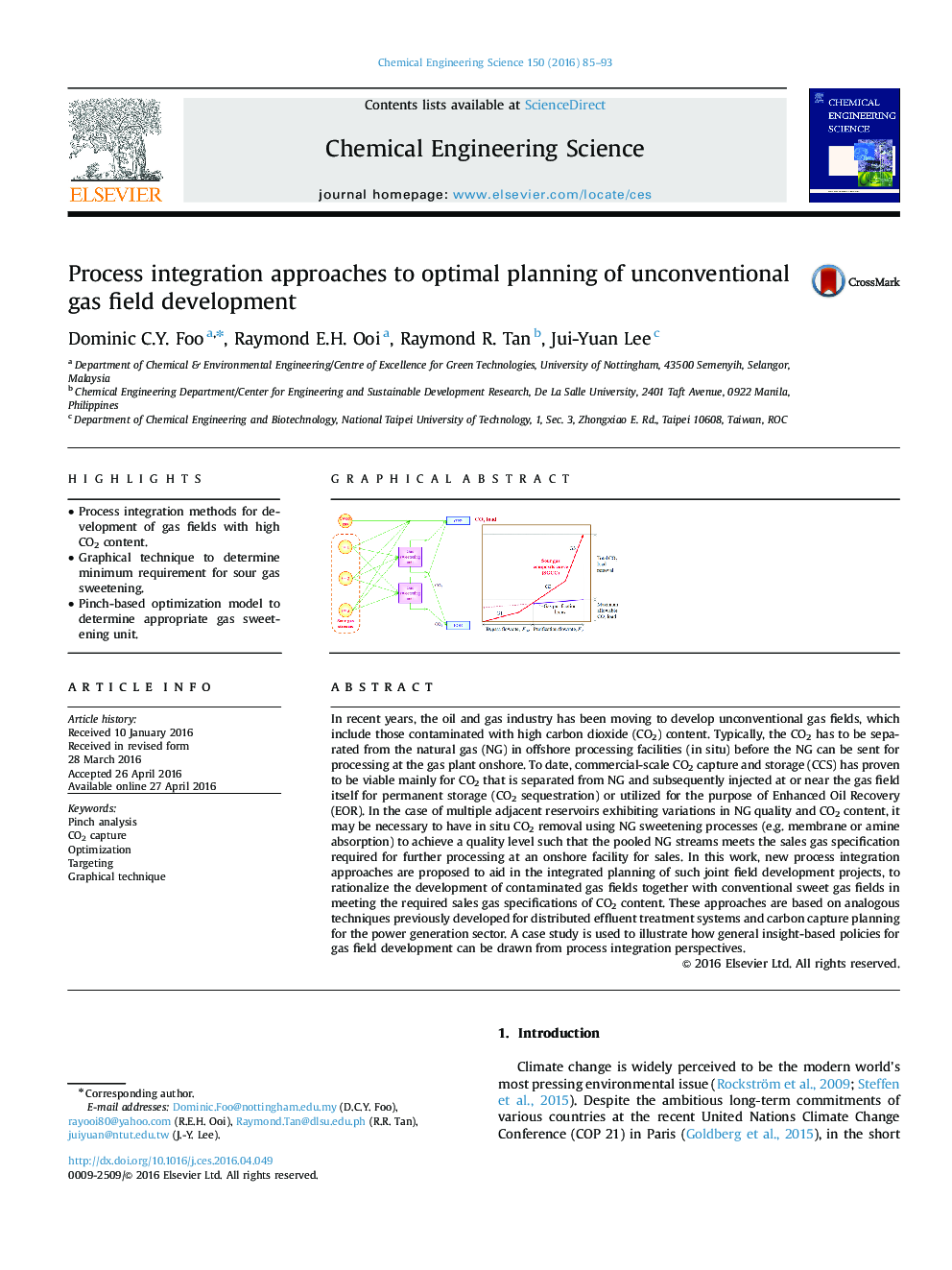| Article ID | Journal | Published Year | Pages | File Type |
|---|---|---|---|---|
| 154357 | Chemical Engineering Science | 2016 | 9 Pages |
•Process integration methods for development of gas fields with high CO2 content.•Graphical technique to determine minimum requirement for sour gas sweetening.•Pinch-based optimization model to determine appropriate gas sweetening unit.
In recent years, the oil and gas industry has been moving to develop unconventional gas fields, which include those contaminated with high carbon dioxide (CO2) content. Typically, the CO2 has to be separated from the natural gas (NG) in offshore processing facilities (in situ) before the NG can be sent for processing at the gas plant onshore. To date, commercial-scale CO2 capture and storage (CCS) has proven to be viable mainly for CO2 that is separated from NG and subsequently injected at or near the gas field itself for permanent storage (CO2 sequestration) or utilized for the purpose of Enhanced Oil Recovery (EOR). In the case of multiple adjacent reservoirs exhibiting variations in NG quality and CO2 content, it may be necessary to have in situ CO2 removal using NG sweetening processes (e.g. membrane or amine absorption) to achieve a quality level such that the pooled NG streams meets the sales gas specification required for further processing at an onshore facility for sales. In this work, new process integration approaches are proposed to aid in the integrated planning of such joint field development projects, to rationalize the development of contaminated gas fields together with conventional sweet gas fields in meeting the required sales gas specifications of CO2 content. These approaches are based on analogous techniques previously developed for distributed effluent treatment systems and carbon capture planning for the power generation sector. A case study is used to illustrate how general insight-based policies for gas field development can be drawn from process integration perspectives.
Graphical abstractFigure optionsDownload full-size imageDownload high-quality image (276 K)Download as PowerPoint slide
